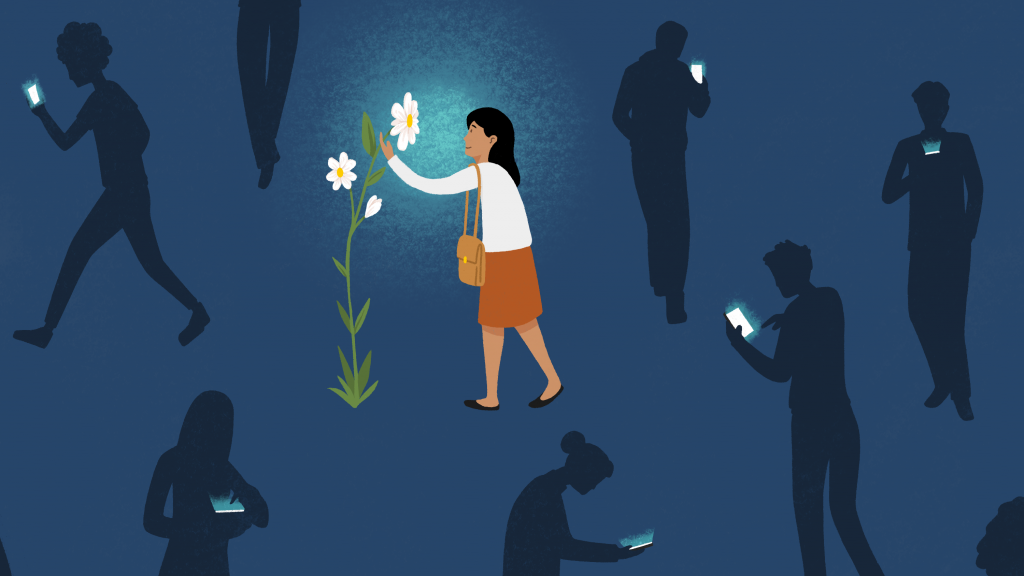Our founders, Chris and Jane, were were delivering a range of consulting and programmes working with the Lane Crawford China team in Shanghai last year. During their first workshop, Katherine, Chief Retail Officer for the company, stood at the front of the room with a mixing bowl. With great flourish, she put her mobile phone into it and passed it around the room for the other attendees to follow suit. Everyone, without exception did the same – no excuses, no avoidance, total commitment, total focus.
Interestingly, during the coffee breaks, people didn’t go and retrieve their phones, they talked, mingled and laughed with one another. In one of the most technologically cognisant countries in the world, this senior team of busy, clever people, demonstrated that actually committing to each other in the moment was something that they valued, they weren’t half present, they were fully there, fully focused.

The need for a digital detox
Recent research has shown that people check their phones on average 200 times a day and anyone with teenagers will tell you that they prefer to be in separate houses playing online than together in the same house. How is that beneficial to building relationships and being able to deal with people? More than that, some studies have shown that a digital dependency can lead to an increase in narcissistic behaviours and a lack of empathy. And light from screens inhibits the production of melatonin which is essential for sleep as well as causing digital eye strain and headaches.
More and more we are recognising that something needs to change for the sake of performance and wellbeing – bring on the advent of the Digital Detox. According to Wikipedia, a digital detox refers to a period of time when a person voluntarily refrains from using digital devices such as smartphones, computers and social media platforms. This form of detox has gained in popularity as individuals have increased their time spent on digital devices and trawling the internet. It’s a growing business but actually, all you need is a few simple steps to have your very own digital detox and regain control of your digital diet.
Simple steps to have a digital detox
- Acknowledge what’s going on with you. Take time to reflect on how much time you are spending on your devices. How much of that time is reactive and how much of it is a conscious decision? Does it interrupt you and if so at what cost? It takes time to switch between tasks and re-engage.
- Set expectations and set an example. If you’re going offline, let people know. If they need you, they will find you. This also serves to set an example to colleagues, team members, family and friends. If you send an email late at night, even if you don’t expect others to do so, you are setting an example. You don’t need to be always accessible and always on-line. Human beings need down time.
- When you’re in the room, be in the room. When you go into meetings for either personal or business reasons, be present. Put your gadgets away. Give people 100% of your attention and don’t allow yourself to be distracted from the task in hand. It doesn’t matter whether it’s your boss or a waiter in a bar. Pay attention. You will earn a greater level of trust and respect from making people feel valued.
- Give yourself an allowance. Set times during which you will be online and times when you need to focus on other things. If necessary, diarise it.
- Build a gadget crèche. In meetings or at family meals for example, get everyone to turn their phones off and put them in a box or a drawer. Sure, there will always be one person who says ‘I will need to keep my phone on’ but if the majority comply then you’ll start to build acceptable behaviours.
- Focus on the benefits of a digital detox and being unplugged. What are you getting from it? Set yourself tasks and goals to achieve while you’re offline. Allow yourself the time and space to focus. Reward yourself for your achievements.
- Turn off notifications. Every time we hear a notification we can’t help but be distracted and it’s so addictive. And yes, vibrate is a notification.
- Change your habits – carry your phone in a different pocket. When you get home leave it with your keys in the hallway. That way you’ll have to get up to check it.
- Reflect each day on what you did with your downtime. How much more did you get done? How many more positive human interactions did you have?
Each of these steps is about creating new, positive habits in your daily life that both improve your relationship with your digital devices and put you back in the driving seat of your interactions and focus.
If you’re interested in supporting your team to make positive behaviours stick, create new habits or improve focus take a look at our toolkits and workshops or get in touch with the team.



